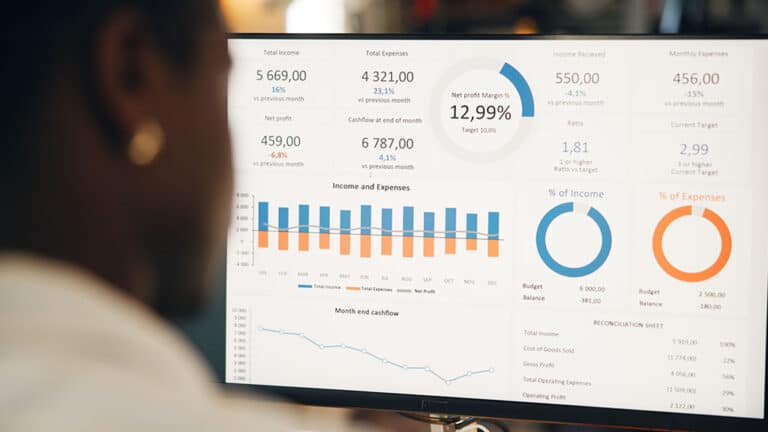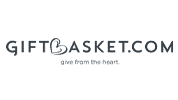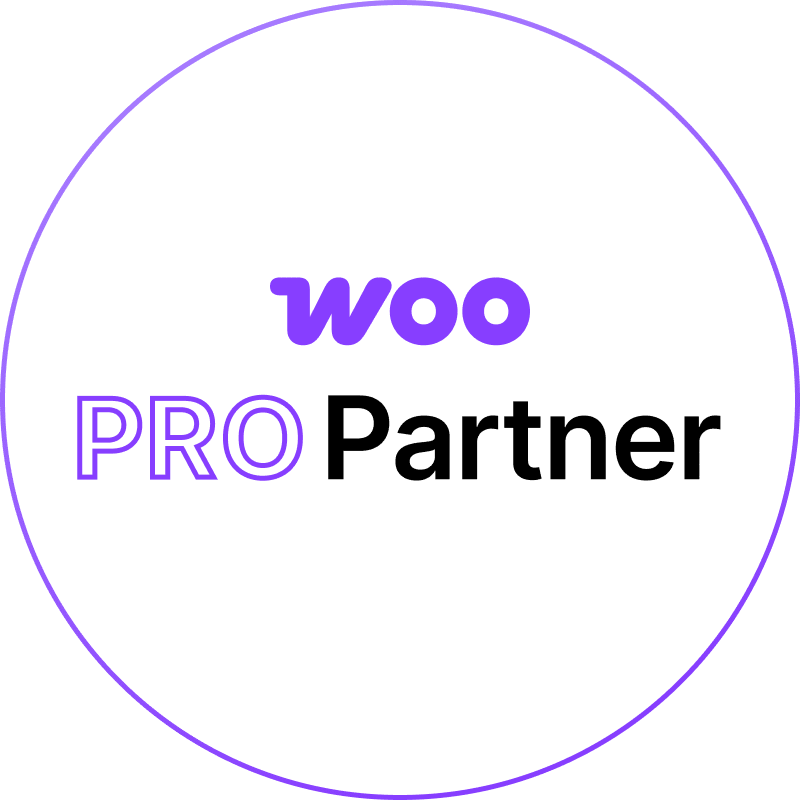Best PPC Practices for E-Commerce Startups
For e-commerce startups, getting noticed in the crowded digital marketplace can be challenging. With limited resources and fierce competition from established brands, it can be difficult to break through. However, Pay-Per-Click (PPC) advertising offers a solution by allowing startups to target their ideal customers and drive traffic to their website quickly. The key to success lies in implementing best practices that maximize ad spend while achieving meaningful results.
PPC advertising, especially when managed well, can provide e-commerce startups with a powerful way to generate immediate visibility and sales. The ability to reach users who are actively searching for specific products and services makes PPC a highly efficient tool for startups looking to establish their presence. Unlike organic methods, which can take time to yield results, PPC offers immediate traffic, giving startups the opportunity to compete with larger, more established brands. By focusing on the right keywords, crafting compelling ads, and optimizing for conversions, startups can see rapid growth while keeping costs manageable.
This guide will explore the best PPC practices for e-commerce startups. From defining clear campaign goals to leveraging Google Shopping Ads, we’ll walk you through actionable strategies that can help you grow your brand and drive sales. For those seeking to maximize the impact of their campaigns, PPC management services can help ensure that every element is optimized to achieve the best possible results.
Define Clear Campaign Goals
The first step in creating an effective PPC strategy is to define clear and measurable goals. Without a well-defined objective, it can be challenging to assess the success of your campaigns or make adjustments as needed. For e-commerce startups, the most common goals typically revolve around driving traffic, boosting sales, or increasing brand awareness. However, setting specific, measurable targets within these categories is essential to track your progress.
For example, if your goal is to drive more traffic to your website, you might set a specific target for the number of clicks your ads should generate each week or month. On the other hand, if your primary goal is sales, focusing on return on ad spend (ROAS) or cost per acquisition (CPA) will help you gauge the success of your campaigns in terms of revenue. Clear goals also allow you to adjust your budget and targeting strategies based on performance.
Additionally, e-commerce startups often need to balance multiple objectives. For instance, you may want to increase traffic to your product pages while also building brand awareness in your target market. Having a clear understanding of what success looks like will help you prioritize efforts and allocate your budget effectively across different campaign types. Whether you’re focusing on conversion goals or simply increasing brand visibility, defining your goals early on will set the direction for the rest of your PPC strategy.
Conduct Thorough Keyword Research
Keyword research is the foundation of any PPC campaign. Selecting the right keywords ensures that your ads are shown to people who are actively searching for products or services like yours. For e-commerce startups, the goal is to target keywords that attract high-quality traffic and generate conversions without overspending. Start by focusing on long-tail keywords, which are more specific and typically have lower competition than broader terms. For example, instead of bidding on a generic keyword like “clothing,” try targeting a more specific phrase like “affordable women’s winter jackets” or “sustainable men’s t-shirts.” Long-tail keywords help you attract users who are further down the purchasing funnel, leading to higher conversion rates.
While long-tail keywords can be valuable for targeting specific niches, it’s also essential to strike a balance with broader terms that can increase visibility. Big-brand competitors may dominate high-traffic keywords, but targeting a mix of both broad and niche keywords gives you a better chance of reaching a wider audience.
Keyword research tools like Google Keyword Planner and SEMrush can help you discover the most relevant keywords for your business and estimate the costs associated with each term. In addition to targeting the right keywords, make sure to include negative keywords in your campaigns to filter out irrelevant traffic. For example, if your e-commerce store sells premium skincare products, you may want to add “cheap” or “free” as negative keywords to avoid attracting visitors who are looking for low-cost or free alternatives.
By conducting thorough keyword research and optimizing your keyword selection, you can ensure that your PPC campaigns are reaching the right audience and generating the best possible return on investment.
Create Compelling Ad Copy
Once you’ve selected the right keywords, the next step is to create compelling ad copy that resonates with your target audience. The ad copy is what potential customers will see when your ad appears in search results, so it’s important to make it attention-grabbing, relevant, and persuasive. The goal is to convince users to click on your ad and visit your website, where they can learn more about your products or services and make a purchase.
Start by writing clear, concise headlines that include your primary keyword and communicate the value of your offering. For example, if you sell eco-friendly home goods, a headline like “Sustainable Home Products – Shop Now for Eco-Friendly Solutions” immediately tells users what your business is about and encourages them to click. Your description should further highlight the unique selling points (USPs) of your products, such as quality, sustainability, or special promotions like free shipping or discounts.
Include a strong call to action (CTA) in your ad copy to encourage immediate action. Phrases like “Shop Now,” “Get 20% Off,” or “Limited-Time Offer” can create a sense of urgency and motivate users to click on your ad. Additionally, be sure to align your ad copy with your landing page content. A seamless user experience, where the ad message matches the landing page, will increase the chances of conversion and improve your quality score on Google Ads.
Regularly A/B test your ad copy to see which variations perform best. For instance, you might test different headlines, offers, or CTAs to determine what resonates most with your audience. By constantly refining your messaging based on performance data, you can improve click-through rates and drive more qualified traffic to your e-commerce store.
With compelling ad copy, you can create a sense of urgency and value, increasing the likelihood that users will click and convert into customers.
Leverage Google Shopping Ads
For e-commerce startups, Google Shopping Ads are one of the most effective ways to showcase your products directly in search results. These ads feature product images, pricing, and ratings, making it easy for users to see what you’re offering and decide to click on your ad. Shopping Ads are highly visual, which can help your brand stand out, especially when competing against larger retailers. For e-commerce startups, utilizing this feature can provide immediate visibility, making it easier to capture the attention of users ready to make a purchase.
To leverage Google Shopping Ads, the first step is to ensure your product feed is up-to-date and optimized. Your product feed contains all the necessary details, such as titles, descriptions, prices, images, and availability. Make sure that each entry is accurate and includes relevant keywords that users are likely to search for. For example, if you sell organic skincare, a product like “Organic Vitamin C Serum for Glowing Skin” should include those keywords in the product title and description.
Additionally, ensure that your Google Merchant Center account is properly set up and synced with your Google Ads account. This will allow your products to appear in the Shopping Ads section of search results. Regularly monitor your product feed to ensure it is free of errors and up-to-date with your current inventory and pricing. If there are any discrepancies, such as out-of-stock items, your ads may not show up, or users may have a poor experience if they try to purchase unavailable products.
By using Google Shopping Ads effectively, e-commerce startups can attract users who are actively searching for products like theirs, increasing the likelihood of conversions while maximizing visibility in search results.
Optimize Landing Pages for Conversions
After your ad captures a user’s attention and they click through, the next step is ensuring your landing page is optimized to convert that click into a sale or lead. The landing page should be a seamless extension of your ad, offering a cohesive experience that delivers what was promised in the ad. For e-commerce startups, a highly optimized landing page can make all the difference in improving conversion rates and generating sales.
First, ensure that your landing page loads quickly. According to research, if a page takes more than three seconds to load, users are likely to abandon it. To improve page load speed, compress images, remove unnecessary elements, and ensure your website is hosted on a fast, reliable server.
Your landing page should have clear and compelling calls-to-action (CTAs). Whether you want visitors to make a purchase, sign up for a newsletter, or request more information, your CTA should be prominent and easy to find. Use action-oriented language like “Shop Now,” “Claim Your Discount,” or “Get Started Today” to encourage immediate action. Make sure the CTA button stands out visually, perhaps with a contrasting color, to draw the user’s eye.
Additionally, trust-building elements like product reviews, testimonials, and security badges should be included on your landing page. These reassure visitors that your e-commerce store is reliable and secure, which is especially important for new businesses trying to build customer trust.
Finally, optimize your landing page for mobile users. A significant portion of e-commerce traffic comes from mobile devices, so your page should be fully responsive and easy to navigate on smartphones and tablets. Ensure the layout is clean, the text is legible, and CTAs are easy to click.
By creating optimized landing pages that align with your ads and offer a seamless, engaging user experience, you’ll increase the likelihood of converting visitors into customers, improving your overall ROI from PPC campaigns.
Use Retargeting to Re-Engage Shoppers
For e-commerce startups, retargeting is an essential strategy to ensure you don’t lose potential customers who have interacted with your site but didn’t convert. Retargeting ads allow you to re-engage users by showing them relevant ads as they browse other websites or social media platforms, reminding them of your products and encouraging them to return to your site. This can be especially valuable when competing against bigger brands, as it allows you to stay in front of prospects and increase the chances of converting them into loyal customers.
Start by setting up a retargeting campaign in Google Ads or a social media platform like Facebook or Instagram. These platforms allow you to create custom audiences based on users’ previous actions on your website. For example, you can target visitors who added products to their cart but didn’t complete the purchase, or users who visited product pages but didn’t buy.
Dynamic remarketing is particularly effective for e-commerce startups. With dynamic remarketing, your ads are personalized to show the exact products that users previously viewed or added to their cart. For example, if a user viewed a pair of shoes but didn’t purchase, they might later see an ad with that same pair of shoes, along with an incentive like “Free Shipping on Your Next Order.” This personalized approach increases the relevance of your ads and drives users back to your site to complete the purchase.
Remarketing campaigns can also help you increase brand awareness and encourage repeat business. For instance, you can target users who have already made a purchase with ads promoting complementary products or offering discounts on future purchases. This strategy not only helps you recover abandoned carts but also keeps your brand top-of-mind for customers who may return to make additional purchases.
By implementing retargeting campaigns, e-commerce startups can effectively increase conversions and drive repeat business, even in the face of strong competition from larger brands.
Monitor and Adjust Campaign Performance
Effective PPC campaigns require continuous monitoring and optimization to ensure they remain cost-effective and aligned with your business goals. For e-commerce startups, tracking key performance metrics and making adjustments based on real-time data is critical for achieving the best results while maximizing your budget.
Start by monitoring essential metrics like click-through rate (CTR), cost-per-click (CPC), conversion rate, and return on ad spend (ROAS). These metrics give you insight into how well your ads are performing, where to allocate your budget, and whether adjustments are needed. For example, a low CTR might indicate that your ad copy or targeting needs improvement, while a low conversion rate suggests that the landing page experience could be optimized.
Use A/B testing to refine your ad copy, targeting, and bidding strategies. For example, you can test different headlines, product descriptions, and calls-to-action (CTAs) to determine which variations resonate best with your target audience. Running tests with different ad formats (e.g., responsive search ads vs. standard text ads) will also help you determine which approach works best for driving conversions.
Regularly review your search term reports to identify new keyword opportunities and eliminate underperforming ones. Negative keywords, in particular, are important to ensure that your ads don’t appear for irrelevant searches, saving you money on clicks that are unlikely to result in sales. For example, if you’re running ads for “luxury handbags” but find that users searching for “cheap handbags” are clicking on your ads, you can add “cheap” as a negative keyword to exclude that audience.
Reallocate your budget to the best-performing campaigns and keywords to maximize your ROI. If a particular product or service is generating high-quality traffic and conversions, consider increasing its budget to scale up results. Conversely, pause or reduce spending on campaigns that aren’t driving valuable results. Monitoring your campaigns regularly ensures that you’re optimizing your spending and getting the most out of your advertising efforts.
Implement Automated Bidding Strategies
Managing PPC campaigns can be time-consuming, especially for e-commerce startups with limited resources. Automated bidding strategies are designed to make it easier to manage your campaigns while optimizing for the best possible results. These strategies use machine learning to automatically adjust bids in real-time based on performance data, helping startups stay competitive even with limited budgets.
Google Ads offers several automated bidding strategies that can help e-commerce businesses reach their goals. The “Maximize Conversions” bidding strategy automatically adjusts bids to get the most conversions within your budget. This is particularly useful for startups that want to focus on driving sales or leads but don’t have the time or expertise to manually adjust bids based on each keyword or product.
Another strategy, “Target ROAS” (Return on Ad Spend), helps you maximize your revenue while maintaining a specific return on investment. For instance, if you set a target ROAS of 400%, Google Ads will adjust your bids to ensure you generate four times the amount of revenue for every dollar spent. This strategy is ideal for e-commerce startups that want to focus on achieving a profitable return from their ads.
Both automated bidding strategies allow Google’s machine learning algorithms to analyze large datasets and adjust bids based on user behavior, device, location, time of day, and other factors. While this reduces the manual effort required, it’s still essential to monitor your campaigns regularly to ensure the automated system is performing as expected. You can adjust your goals or budget as needed to ensure your campaigns stay on track.
By leveraging automated bidding strategies, e-commerce startups can save time, reduce the complexity of managing bids, and improve campaign performance by ensuring that bids are optimized to meet their specific goals.
Scale What Works
As your e-commerce startup gains traction and you identify which campaigns and products are delivering the best results, scaling becomes the natural next step. To achieve long-term success, it’s crucial to capitalize on your high-performing campaigns and products, while continuously optimizing others to ensure consistent growth.
Start by reviewing the top-performing campaigns, keywords, and ad groups. Identify the factors that make these campaigns successful, such as specific products, targeted keywords, or ad copy. Then, allocate more budget to these high-converting areas to scale results. For example, if your ads for a particular product category (e.g., “organic skincare products”) are generating a high ROAS, you can increase your budget for those keywords to capture more high-intent traffic.
You can also expand successful campaigns by exploring new keywords, expanding your geographic targeting, or introducing new products to your ads. For instance, if you’ve been running ads for “luxury handbags” and they’ve been successful, consider expanding your product selection and adding “designer shoes” or “leather accessories” to your campaign to attract a broader audience.
Scaling should also involve expanding to new advertising platforms. Google Ads isn’t the only option for e-commerce businesses looking to grow. You can explore platforms like Facebook Ads or Instagram Ads, which offer advanced targeting and integration with e-commerce stores. Retargeting campaigns on these platforms can be an excellent way to reach users who have already engaged with your brand, nurturing them toward a purchase.
Monitoring performance as you scale is key. Regularly assess your campaigns to ensure the additional spend is generating positive returns. Even as you scale, you want to ensure that you are getting the same (or better) ROI on larger budgets. Adjust your approach if needed, keeping a close eye on how well the scaled campaigns perform. Scaling doesn’t mean throwing money at everything—it requires data-driven decisions to grow effectively.
Measure Success and Refine Campaigns
Once your PPC campaigns are up and running, it’s important to continually measure success and refine your approach to ensure ongoing performance improvements. For e-commerce startups, measuring campaign success goes beyond the basic metrics like clicks and impressions. Key metrics to focus on include conversion rate, cost per conversion, and return on ad spend (ROAS).
Conversion rate is one of the most important metrics to track, as it shows how well your landing pages and ad copy are converting visitors into customers. If your CTR is high but your conversion rate is low, this may indicate that your landing page isn’t aligned with your ad messaging or that it’s not optimized for user experience. Use A/B testing to improve your landing pages and refine your CTAs for higher conversion rates.
Cost per conversion (CPC) is another important metric to measure. This helps you understand how much you are spending on average to acquire a customer. Keep a close eye on this metric and aim to reduce it over time through optimization techniques like refining your keyword targeting, improving your quality score, and enhancing your ad copy.
Finally, tracking your ROAS is essential for evaluating the profitability of your campaigns. By calculating how much revenue you are generating compared to how much you are spending on ads, you can ensure that your campaigns remain profitable. Regularly analyze your ROAS and adjust your strategy accordingly.
By consistently measuring performance and refining your campaigns, you can ensure that your e-commerce startup’s PPC efforts remain effective, even as you scale. With the right approach, your startup can continue to grow, capture more high-quality leads, and generate long-term success.Ready to take your PPC campaigns to the next level? Contact Zen Agency today to discover how our expert PPC management services can help you drive targeted traffic, increase conversions, and maximize your ROI. Let’s turn your digital ads into measurable success!

















